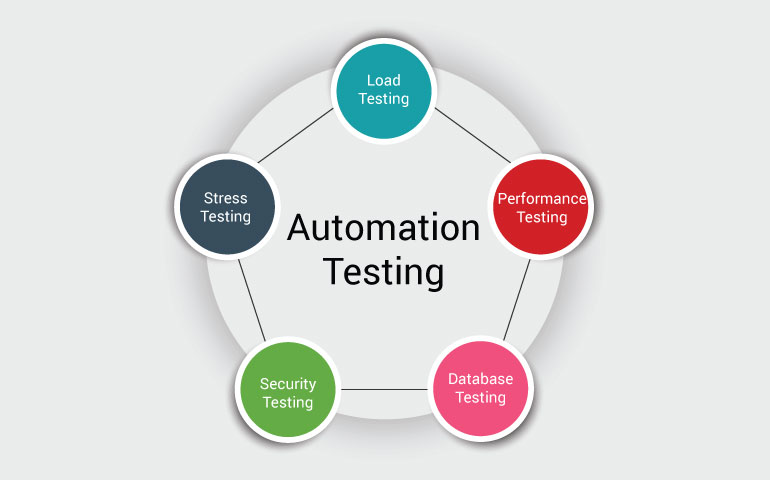The Significance of Automation Testing in Agile Development Atmospheres
The Significance of Automation Testing in Agile Development Atmospheres
Blog Article
Making Certain Success in Automation Testing: Secret Metrics, Challenges, and Solutions Every QA Team Ought To Know
In the realm of software application high quality guarantee, the landscape of automation testing is ever-evolving, demanding a thorough approach to guarantee smooth operations. Key metrics offer as the compass directing QA groups with the vast terrain of test automation, clarifying development and areas for enhancement. Difficulties loom large, frequently casting shadows on the path to success. By recognizing these hurdles and applying effective solutions, QA teams can navigate through intricacies with skill. The trip to understanding automation screening is led with nuances that need a keen eye for surveillance, analysis, and continual renovation. automation testing. As the industry propels forward, the pursuit for ideal performance in automation screening remains a constant search, advising QA teams to equip themselves with the knowledge and approaches crucial for accomplishment.
Value of Trick Metrics
Understanding the importance of key metrics is crucial for examining the efficiency and performance of automation screening procedures. Secret metrics serve as quantifiable steps that supply important insights into numerous aspects of the testing procedure, such as test protection, test execution time, defect thickness, and examination instance efficiency. By examining these metrics, QA teams can identify bottlenecks, inefficiencies, and locations for improvement within their automation testing structure.
One essential facet of vital metrics is their capacity to track progress and keep an eye on the overall wellness of the testing process (automation testing). They allow stakeholders to make educated choices based upon data-driven insights, which can result in more efficient screening methods and much better source allotment. Additionally, vital metrics can help groups established sensible objectives, determine the success of automation efforts, and demonstrate the ROI of automation screening efforts

Usual Difficulties Encountered
Obstacles frequently come across in automation testing procedures can substantially influence the general efficiency and effectiveness of QA groups. One of the significant difficulties is the selection of the ideal test instances for automation. Not all test cases appropriate for automation, and selecting the incorrect ones can result in lost time and sources. Additionally, preserving test manuscripts can be a complicated task, particularly as the application undergoes regular changes. Test manuscript upkeep requires continual updates and modifications to guarantee they mirror the present capability accurately. An additional typical obstacle is the initial investment needed for establishing automation frameworks and devices. This can be an obstacle for some organizations, particularly smaller sized ones with limited budget plans. Automation testing may not cover all elements of screening, such as use and user experience testing, which still need hands-on treatment. Conquering these obstacles calls for proper planning, calculated examination instance choice, durable upkeep processes, sufficient sources, and a clear understanding of the restrictions of automation testing.
Reliable Solutions for Challenges
To deal with the challenges come across in automation testing, executing effective solutions is essential for boosting the effectiveness and productivity of QA groups. One essential solution is to purchase durable training programs for QA groups to ensure they have the essential skills to effectively make use of automation tools. Training can link understanding spaces, improve understanding of automation structures, and enhance scripting capabilities, inevitably resulting in more effective test creation and implementation.
Another essential service is to establish clear interaction channels within the QA group and with various other stakeholders, such as designers and project supervisors. Effective communication aids in lining up assumptions, sharing progress updates, and promptly addressing problems or obstacles that might occur throughout the automation testing procedure.

Surveillance and Analysis Techniques
Implementing reliable tracking and analysis strategies is vital for making sure the success and efficiency of automation screening processes. By making use of surveillance tools, QA groups can track the performance of examination scripts, internet recognize bottlenecks, and pinpoint areas for renovation. Real-time surveillance allows for fast detection of concerns, making it possible for fast response and resolution. In addition, assessing test outcomes and metrics supplies valuable insights into the top quality of the software application being tested and the efficiency of the testing strategy.
One key method in surveillance and analysis is the usage of control panels that consolidate appropriate metrics and KPIs in an aesthetically available layout. These control panels provide an extensive overview of examination execution condition, examination insurance coverage, flaw fads, and other critical information. Regularly assessing and analyzing these dashboards can help QA teams make informed decisions, prioritize jobs, and maximize screening initiatives.
Moreover, carrying out automated signals and alerts based upon predefined limits can boost aggressive tracking and timely intervention. By establishing notifies for performance variances or test failures, teams can address issues promptly and prevent them from escalating. Overall, monitoring and evaluation strategies play a crucial duty in making certain the efficiency and success of automation screening initiatives.
Continuous Renovation Approaches
Enhancing the efficacy of automation screening processes requires the regular refinement of Continued approaches and methods. One essential technique to enhancing automation testing procedures is to conduct routine testimonials and retrospectives.

Final Thought
Finally, it is crucial for QA groups to understand the vital metrics, challenges, and solutions in automation screening to ensure success. By thoroughly checking and examining information, carrying out effective services to typical obstacles, and constantly enhancing approaches, QA teams can maximize their testing processes and supply premium software. Sticking to these methods will inevitably lead to a lot more reliable and effective automation screening practices.
By assessing these metrics, QA groups can identify traffic jams, inefficiencies, and areas for renovation within their automation screening framework.
In addition, key metrics can help teams established practical goals, measure the success of visit our website automation efforts, and show the ROI of automation testing efforts.
Difficulties generally run into in automation testing processes can substantially influence the total efficiency and effectiveness of QA teams. Automation testing may not cover all facets of testing, such as functionality and user experience screening, which still need manual intervention.In verdict, it is vital for QA teams to understand the crucial metrics, difficulties, and options in automation testing to make sure success.
Report this page